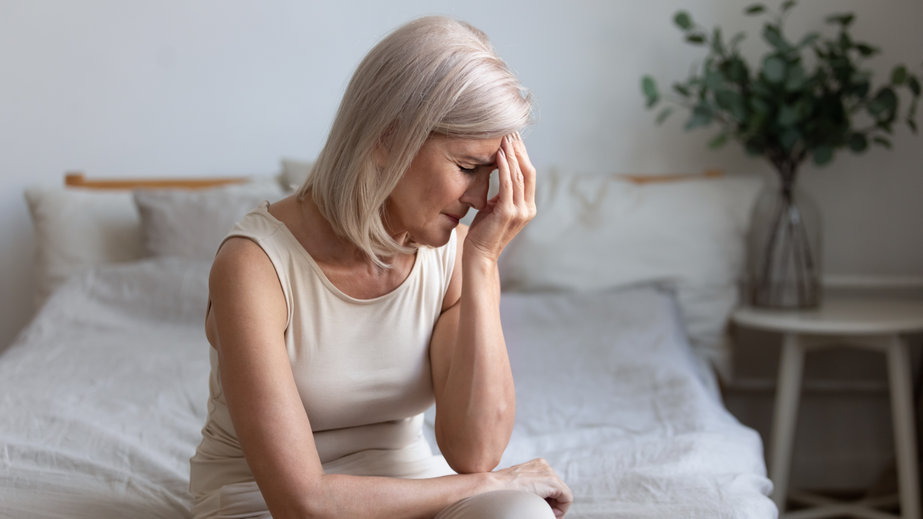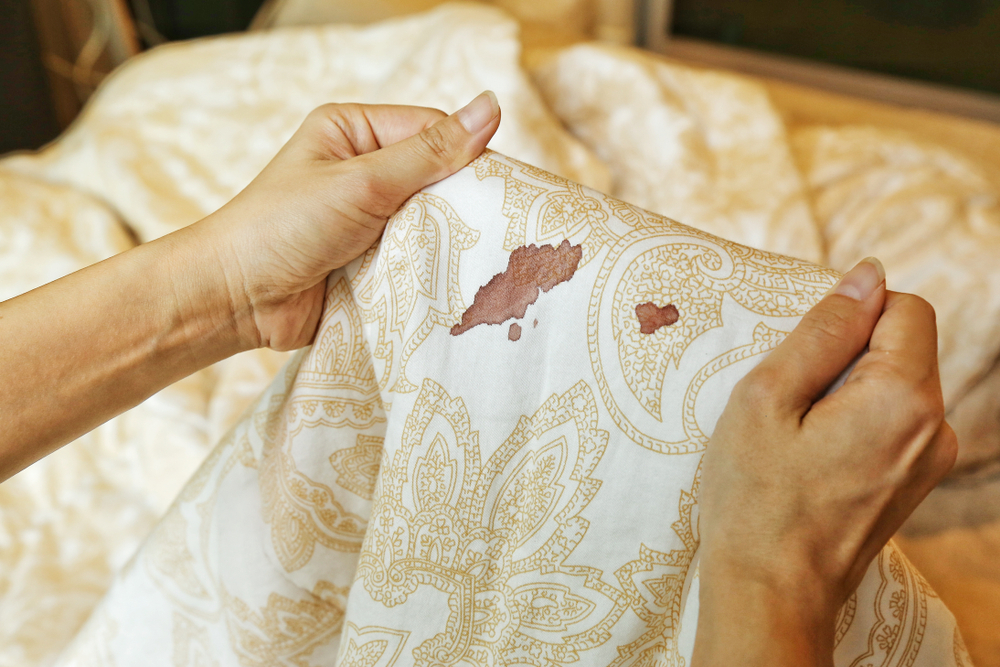Spotting between periods can often leave you with a whirlwind of questions. Is it normal? Could it be a sign of something more serious? Or perhaps, it’s an early indicator of menopause? As your body undergoes hormonal changes, spotting can indeed become a part of your monthly cycle.
However, it’s not always a definitive sign of perimenopause, the transitional phase leading to menopause. It’s important to note that other symptoms and factors should be considered as well. So, let’s find out the mystery behind spotting and its potential links to menopause.

Contents
Is Spotting Between Periods A Sign Of Menopause?
Yes, spotting between periods can be a sign of menopause. As women approach menopause, known as perimenopause, hormonal fluctuations become more pronounced, often leading to irregular menstrual cycles and unexpected bleeding or spotting.
During perimenopause, the ovaries gradually produce less estrogen, which can cause the menstrual cycle to become less predictable. This reduction in hormone levels can lead to lighter, heavier, or irregular periods, including spotting between regular menstrual cycles.
Causes of Spotting Between Periods
Spotting between periods, regardless of menopausal status, often signals benign situations or underlying health conditions. It’s crucial to know seven common causes to be proactive about your health.

- Hormonal Birth Control: Spotting can occur due to the introduction of estrogen in birth control. You may notice this throughout your cycle or a phenomenon known as breakthrough bleeding occurring right before your cycle. Various types of birth control – the pill, intrauterine device (IUD), the patch, vaginal ring or an implant – can initiate this situation.
- Pre-Menopause: In the stage before menopause, called pre-menopause or perimenopause, sporadic bleeding may occur. At this time, the heaviness of bleeding might exceed your regular periods. More infrequently, abdominal pain or discomfort during intercourse may manifest.
- Polycystic Ovary Syndrome (PCOS): Women affected by PCOS may notice irregular periods accompanied by spotting. Additional symptoms often include fertility issues, weight gain, and skin conditions such as increased oiliness or acne.
- Endometriosis and Adenomyosis: Conditions affecting the uterus, namely endometriosis and adenomyosis, might also result in bleeding or spotting between periods. Commonly, these conditions can trigger heavy or painful menstrual periods, and, on occasion, cramps occurring outside regular menstrual periods.
How To Manage Spotting During Menopause?
Here are some effective strategies to consider:

1. Monitor Your Symptoms
Track Menstrual Cycle: Keep a diary of your menstrual cycles and any spotting, including when it occurs and any accompanying symptoms. This can help identify patterns and provide useful information to your healthcare provider.
2. Maintain a Healthy Lifestyle
- Balanced Diet: Eat a diet rich in fruits, vegetables, whole grains, and lean proteins. Ensure you get enough calcium and vitamin D to support bone health, which can be affected by menopausal changes.
- Regular Exercise: Engaging in regular physical activity helps manage weight, reduce stress, and improve overall health, which can help alleviate some menopausal symptoms.
3. Manage Stress
Relaxation Techniques: Practices like yoga, meditation, or deep breathing can help manage stress, which might indirectly help regulate hormone levels and reduce spotting.
4. Stay Hydrated and Avoid Stimulants
Drinking plenty of water and reducing caffeine and alcohol intake can help maintain general health and potentially reduce menopausal symptoms.
5. Hormonal Management
- Hormone Replacement Therapy (HRT): For some women, HRT can help stabilize fluctuating hormone levels and may reduce irregular bleeding or spotting. Discuss the risks and benefits with your healthcare provider.
- Birth Control Pills: For women in perimenopause, low-dose birth control pills can regulate menstrual cycles and reduce unexpected spotting.
6. Use of Non-Hormonal Medications
Medications like non-steroidal anti-inflammatory drugs (NSAIDs) can sometimes be used to manage bleeding. Your doctor can provide guidance based on your specific needs.
7. Alternative Therapies
Herbal Supplements: Some women find relief with phytoestrogens (plant estrogens) or other supplements like black cohosh. Always consult with a healthcare provider before starting any new supplements.
8. Consult Healthcare Providers
Regular Check-ups: Regular visits to your gynecologist are crucial during menopause. Discuss any new or worsening symptoms, including spotting. Diagnostic tests, like a pelvic exam or ultrasound, might be necessary to rule out other conditions.
Frequently Asked Questions
Why am I bleeding 2 weeks after my last period in perimenopause?
During perimenopause, hormone level fluctuations often interrupt ovulation. Continued estrogen production due to lack of ovulation thickens the endometrium, causing irregular menstrual periods and subsequent bleeding or spotting.
What does perimenopause spotting look like?
Perimenopausal spotting or discharge may be brown or dark, indicating old blood leaving the body. Throughout the month, you may observe such spotting events. Discharge might be thin and watery, or thick and clumpy.
What stage of perimenopause am I in?
A consistent alteration in your menstrual cycle by seven days or more could signal early perimenopause. If there is a menstrual gap of 60 days or more, you’re likely in late perimenopause.
Why am I only spotting instead of my period?
Several factors like menopause, pregnancy, ovulation, stress, polycystic ovary syndrome (PCOS), other health disorders, trauma, use of birth control pills, and smoking can cause spotting instead of a regular period.
What are the worst symptoms of perimenopause?
Perimenopause can result in challenging symptoms such as mood fluctuations, changes in sexual desire, difficulty with concentration and sleep, headaches, night sweats, hot flashes, and vaginal dryness.
I am a medical student with experience and interest in Women’s health and well-being.